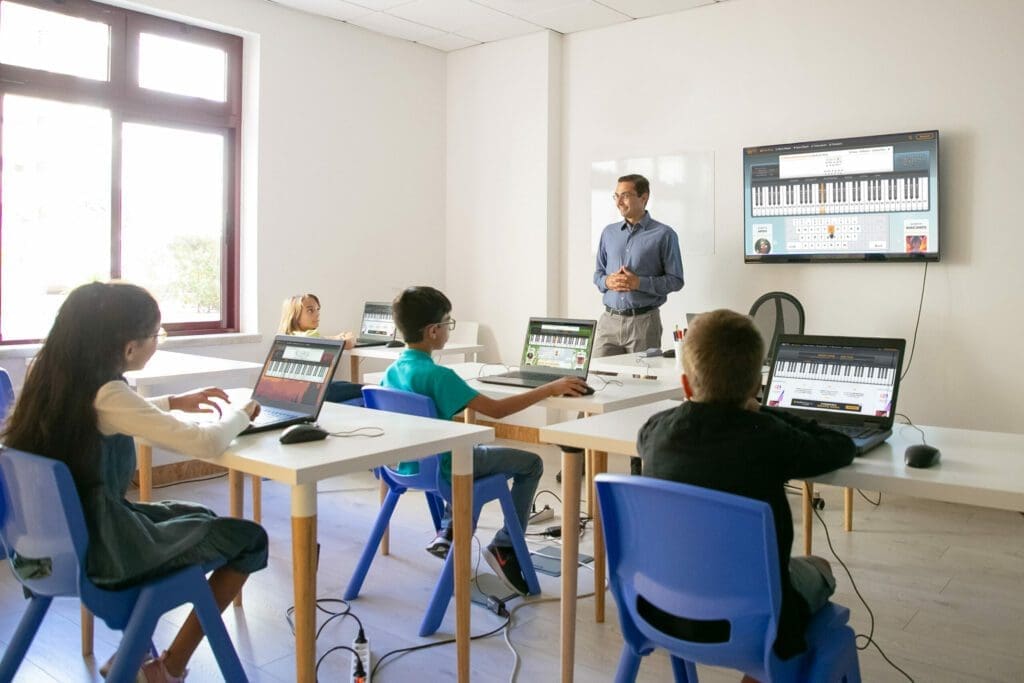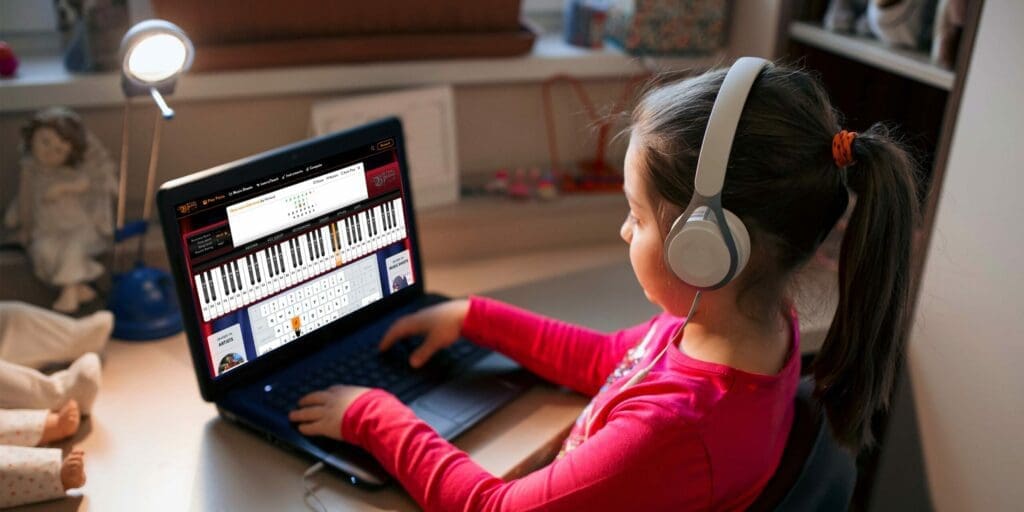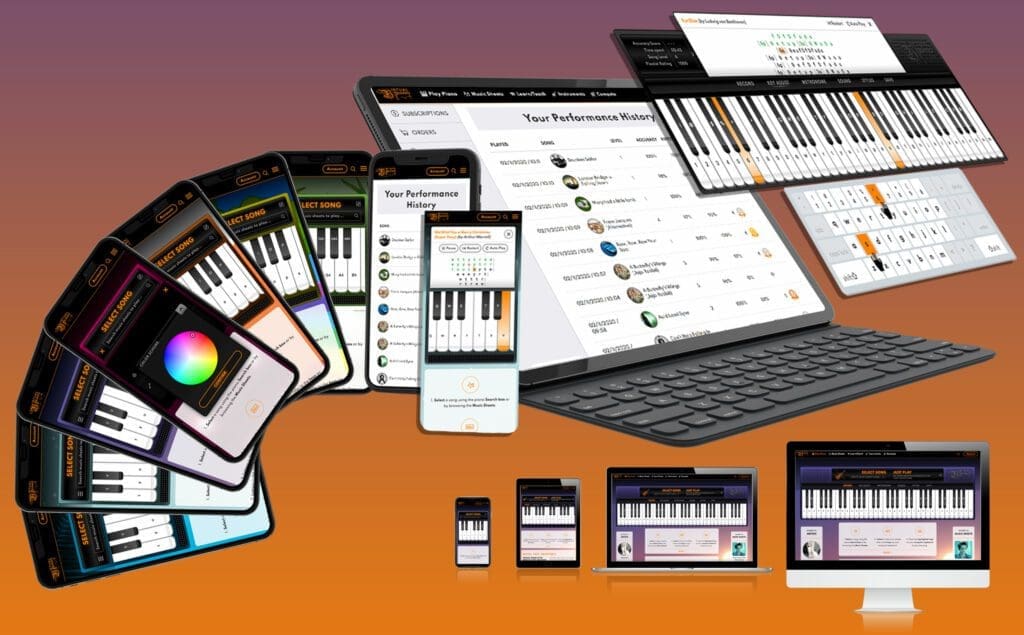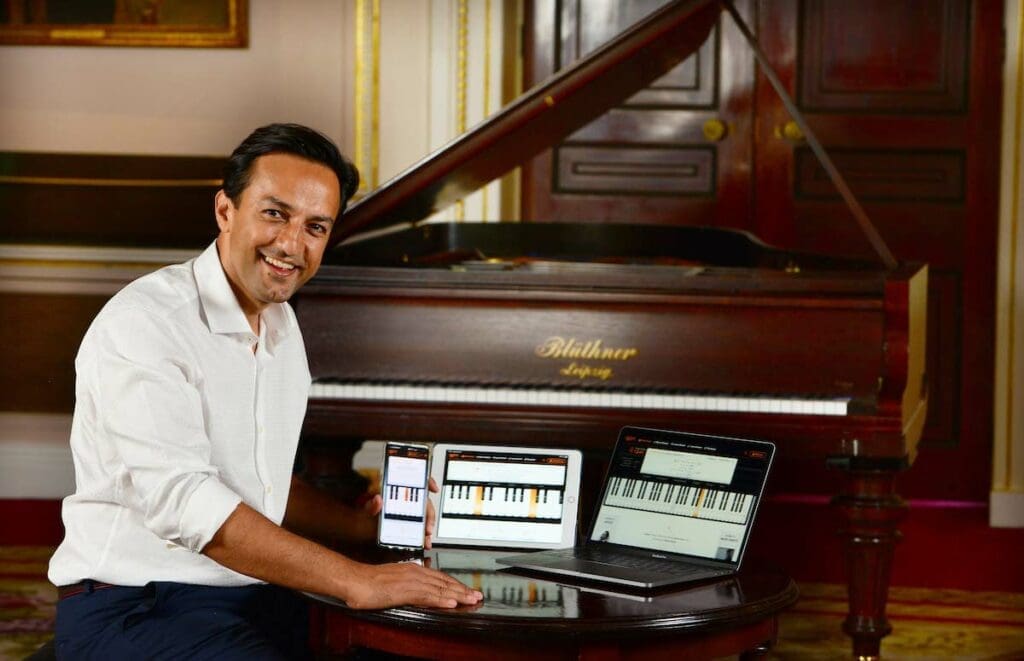
Virtual Piano is an online tool that allows users to play a virtual keyboard instrument. It is a great way for beginners to learn how to play the piano and for experienced players to practice and refine their skills. The virtual piano can also be used to compose music, record performances and even share them with other users. The virtual piano is available on a variety of platforms including desktop, laptop and mobile devices.
The aim of Virtual Piano is to enable people to experience the magic of the piano through their computer anywhere in the world. In less than two decades, it has already served as a crucial stepping stone for many modern-day hit producers and musicians. Moreso, it has inspired a generation of children to play music, especially children whose families may not have the money or space for a real piano.
History
The Virtual Piano is the world’s first online piano keyboard. Born in 2006, the tool has significantly grown since then, now being used by 19 million people per year across 195 countries. However, the programme’s growth wasn’t always as impressive as that.
The online Virtual Piano tool was formed by Habib Amir, a Londoner brought up under Taliban rule in Kabul, Afghanistan. When he was younger he heard the most beautiful piece of music on a grand piano. He wanted to learn to play it himself, however, he did not own a grand piano. Being a newcomer to the piano, he also could not read music notation.
As a student in England, he had some free time in the evenings. Curious, he wrote some software into a computer. Once the piano was almost complete, he decided on another feature that would help to make the tool as easily accessible as possible. Knowing that formal musical notation was complicated for beginners, he transcribed the notation into the alphabet to make it far easier to understand.
In less than two weeks, the programme was complete.
The programme was initially rolled out on Facebook but its popularity quickly grew. Virtual Piano hit its peak when the pandemic hit, with nine million new users coming to Virtual Piano for the first time between March 2020 and September 2021.
Who can play?

Absolutely anybody! Virtual Piano works on any desktop computer, laptop, tablet and smartphone with access to an internet connection. Rather than downloading an expensive application, which can consume a lot of storage, the piano works as a Web App.
Simply open the Safari browser on a device and type in VirtualPiano.net. For future ease, tap the ‘Share’ icon in the top right-hand corner then select the ‘Add to home screen’ option.
Once the App can be easily accessed, a user can then create an account and begin to make music within minutes. The Virtual Piano programme is a cross-platform Web App, which means any user can simply sign in on another device and pick up from where they left off.
Once in front of the keys, the programme can help even the most nervous of beginners to hit their first notes. Whenever a key is pressed, the programme informs the users which key was pressed. For beginners, it may be best to play along with a popular song. Once a song has been selected, the user can utilise the inbuilt Key Assist feature. This helps users easily identify which key to press when playing a song.
How to play

Once a user is ready to play, they can select a song in the Virtual Piano Search box or by browsing the pre-set Music Sheets. Rather than overwhelming beginners with tricky musical notation, the programme had the clever idea of using letters from the alphabet instead. The letters in the music sheets then refer to the keys on the device keyboard, which is far easier to understand.
When ready to play, press the highlighted keys on the device’s keyboard to play the song. It may take a moment to get up to speed with the App but most users are surprised at how easy the tool is to play.
If a user wishes to head straight into playing without guidance, there is no requirement to play alongside another song. The user simply has to press any key they like. Should it be required, the piano records the most recently played keys. If a user has just played something that sounds amazing, no need to scramble to write the notes down and remember them! The Virtual Piano App does it all by writing the notes onto a blank music sheet.
A huge library of pre-recorded songs and exercises gives the user plenty of choices. In addition, the Visualisation feature shows users a graphical representation of the notes being played, which can help to quickly identify what notes are being played and how they fit together.
Features
The Virtual Piano performs the basics incredibly well. However, let’s take a look at the additional features offered by the Web App.
For those wishing to learn the more complex and intricate layers of the piano, there is good news. The Web App comes with Multi-touch Support, which allows users to play multiple notes at the same time. This is crucial for complex chords and harmonies. If they’d like to check on their performance, there is an Audio Recording option. Users can record their performances and save them as audio files for later playback. This is a great option, although it is important to know audio tracks are limited to thirty seconds for free users.
For those wishing to learn more about the programme’s technical side, the Web App pleasingly allows for MIDI Output. This means that users do not have to be restricted to only the online piano. If they so wish, they can connect to external MIDI devices such as synthesisers. Another good feature to accompany this is Pedal Support which deploys a virtual pedal to hold down notes for a sustained period of time.
Membership options
Pleasingly, the App is not geared towards a hard upsell. Whilst there are adverts and limited recording time for free users, there is more than enough on the free-use option to help any users to learn the piano. However, should they then wish to use more features, the membership can be upgraded.
The paid Virtual Piano Plus membership allows the user to enjoy the feature without advertisements, create music sheets and record performances of their own. This will also allow the user to compete in competitions (exclusive for Plus-memberships) where they can collect medals and awards, and participate in live leagues.
The paid membership, which costs $48 and is billed annually, also opens up the door for commercial use for any song created. Any paid member who wishes to sell the music created on the virtual piano can do so.
The paid membership option also offers a significant increase in recording time. The membership has a recording time limit of five minutes, whereas the free version allows for just thirty seconds. For more information on the app and subscriptions visit their website.
Does it sound like a real piano?

The virtual keyboard aims to simulate a real piano keyboard. The software is based on a 5-octave piano keyboard with 61 keys; 36 white and 25 black. This extends to a full 88-key piano when the programme’s Transpose function is utilised. This feature, which can help a user adjust the Virtual Piano’s note range, can be found in the Sound settings.
There is also the option to introduce a simulated sustain pedal and utilise a metronome feature in beats per minute (bpm) from 40 bpm all the way to 218 bpm.
The truth is, whether the Virtual Piano sounds like a real piano or not is purely subjective. Whilst the Virtual Piano can sound as close to a real piano as possible, there are some piano lovers for whom the sound can never truly be replicated.
Any likely sound limitations with the Virtual Piano will mainly be due to the sound output from the device. For this, it can help to connect the device to speakers. However, that true real-life sound may never be able to be fully replicated.
Can the Virtual Keyboard truly simulate a real piano?
It is perfectly natural for people to be sceptical of a computer App which aims to mimic a classical instrument. Other questions frequently asked include whether skills learned on the virtual piano will actually be able to transfer to a real-life piano, or whether the App may be too complicated to play due to the technology involved.
The great news is there are very simple answers to all of these questions.
The most notable difference between the two options is the price point. A real piano retails at several hundreds of pounds, while grand pianos by brands such as Steinway & Sons have the potential to cost up to hundreds of thousands of pounds.
Another benefit to a virtual piano is the amount of space you would save in comparison to a real piano. This is perfect for people who do not have enough space in their homes.
Playing a virtual piano is also incredibly convenient. Unlike a real piano it can be played on the move, provided there is an active internet connection. Did you know that Damon Albarn recorded the 2010 Gorillaz album The Fall entirely on an iPad, while on tour in America?
From the App’s inception, the aim has always been to keep the programme as simple to learn as possible. There is no complicated notation or intimidation of a real-life grand piano.
As the Web App replicates a real piano keyboard, there is no reason why a user would not be able to quickly replicate their skills on the real thing.
Are there any other benefits?

Virtual Piano is a great way to learn and practice piano without the need to purchase or rent an actual piano. However, there are many other perks too.
The Virtual Piano has a wide range of sound options, allowing users to customise their experience and make it their own. If a user then utilises the paid membership option, these settings can be saved for future use and applied anytime. As well as having the option to practise piano songs, the Virtual Piano can be used to create music and record performances.
The user reviews of Virtual Piano are very positive. The user is provided with the best possible piano-playing experience a computer-based App can provide. Additionally, the user is able to play the virtual piano with a variety of different instruments and sounds, allowing for more creativity and exploration. This can keep things fun.
It is important for the App to not only match a real piano as much as possible but to sprinkle over a few extra features. Unlike a real piano, the user can save their progress, allowing them to come back and continue their progress at any time.
This makes the App a great option for those without the room or budget for a real-life Steinway!
What are the downsides to using a virtual piano?
Despite the Web App’s many plus points, it is important to consider its limitations. The sound quality may be limited compared to an actual piano. Also, it does not provide the same physical tactile experience as playing on a real piano.
While the software is designed to be simple, it may be difficult for beginners to get the hang of the App’s interface. It may also be tricky to create complex musical pieces, which have the potential to expose the App’s limitations.
With any form of computer-based entertainment programme, it is normal to consider how beneficial the Web App will be long-term. This is especially true when using an App in place of a very real-life experience such as learning a new instrument.
It may be that once you have mastered the Virtual Piano, you may then decide to invest in the real thing.
For musicians and producers an online metronome tool is essential when recording, try Music Gateway’s online metronome tool here.









